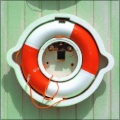|
Glibitz
Posts: 1 |
Glorious Technicolor Process 4 - 3 Strip - Aviator Version_v2 by mihnelis
http://www.filterforge.com/filters/12465.html  |
|
| Posted: August 1, 2015 1:01 am | ||
|
SpaceRay
|
This may be interesting, but reading the description I still do not understand what this filter is for, and what is the effect described, it would help to show some graphical example of the effect you can get with this filter, because the with the preset, I am sorry to say that I do not see much difference.
|
|
| Posted: August 1, 2015 5:26 am | ||
| mihnelis |
Hello SpaceRay. Unfortunately I did this filter using the trial version of FilterForge. I do not own it anymore and as much as I love it, I can't afford it presently. Back when I did this I was looking online to find a solution for generating the channel mattes required for this effect and Filter Forge was by far the best solution. I also did this filter as a Photoshop action, but it is much more cumbersome and no controls over the process.
Here is the video of what this filter does: YouTube I recreated all the steps seen in the video and read as much as I could about the film and the Tehnicolor process. Download the filter and apply it to an image and you will see more clear results. Thanks. |
|
| Posted: August 1, 2015 6:55 am | ||
|
Skybase
|
So basically, it makes it technicolor.
|
|
| Posted: August 1, 2015 10:12 am | ||
| mihnelis |
The short answer is yes. The long answer is that is a very close mathematical approximation, much better than the LUT provided in Color Lookup in Photoshop.
The original three-strip required a huge camera which split the light spectrum in three parts using two prisms and exposing three black and white films through a R, G and B corresponding filter. The resulting negatives were tinted in the complementary hue- CMY and heat-transferred on a clear celluloid film strip. It was a very expensive and cumbersome process and all the steps even though they were extremely accurate, would introduce some idiosyncrasies in the final film. That is mostly due to the tint of the dyes and the filters used in the cameras and also calibrating the white point, witch was no easy task back then. Digitally there is no direct correspondence with the original process except the mathematical interpretation of it. A filter like this is very useful when trying to achieve that particular look because is fast and provides a very nice result without the need to manually tone and CC every image manually. However, what most people don't realize is that the 3 strip process was pure in the sense that there was no overlap in the color spectrum. By extracting the mats with Filter Forge, it gives you very nice clean color channels and that is what I mean by mathematical approximation. |
|
| Posted: August 1, 2015 10:48 am | ||
Join Our Community!
Filter Forge has a thriving, vibrant, knowledgeable user community. Feel free to join us and have fun!
33,764 Registered Users
+12 new in 30 days!
153,645 Posts
+21 new in 7 days!
15,366 Topics
+7 new in 30 days!
Online Users Last minute:
11 unregistered users.
Recent Forum Posts:
- Suggest a new filter. by Rod Detmer
yesterday - Random Crashes using FF14 by PixelStar
2 days ago - Is "snap to grid" actually working? by Raschid Abdul-Nour
December 26, 2025 - Minimalistic Patterns by Ramlyn by Ramlyn
December 25, 2025 - Circumball by Ramlyn by Ramlyn
December 25, 2025 - Affinity 3: Use size of single Artboard by Raschid Abdul-Nour
December 25, 2025 - How to declare your love by Djekki by SpaceRay
December 25, 2025 - Adaptive Tiling by byRo by SpaceRay
December 25, 2025 - Warning, be aware that Your unpowered SSD is a ticking time bomb by SpaceRay
December 25, 2025 - Happy Holidays! by SpaceRay
December 25, 2025 - Filter Forge 15 Released by Rod Detmer
December 24, 2025 - Preview issue with animation by Odette
December 20, 2025